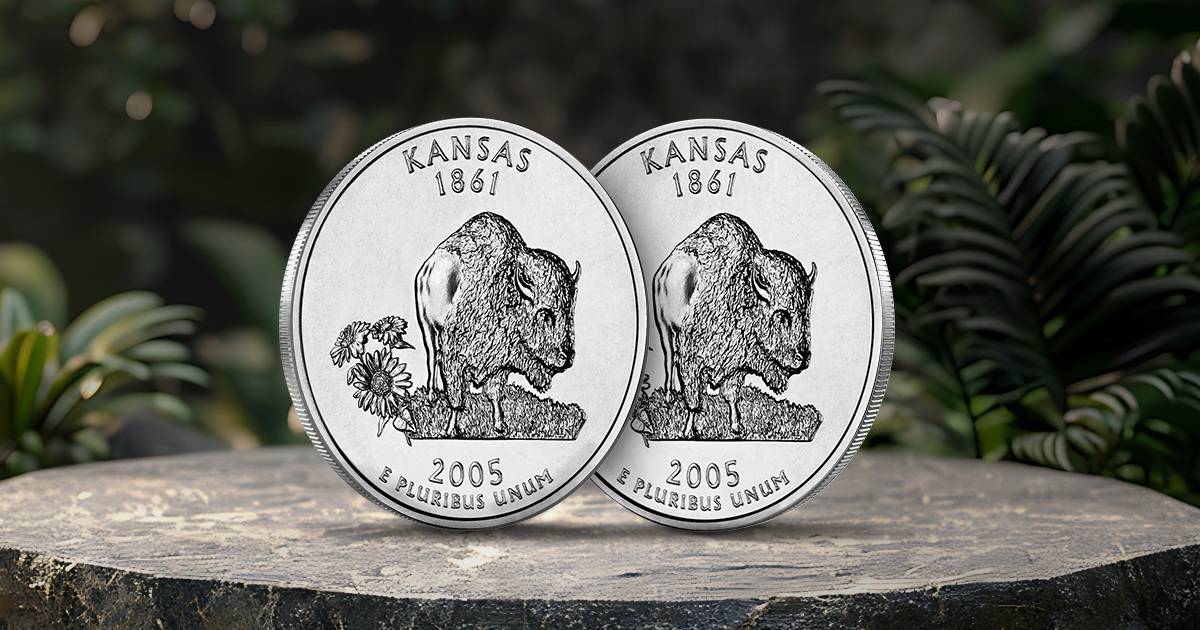
If your 2005 Kansas quarter is missing lettering, you probably have an error coin. Error coins are created when mistakes of several different varieties occur in the minting process. There are several known errors on the 2005 Kansas state quarter; if yours is missing part of the word KANSAS or LIBERTY, it might be a filled die error.
What is a Grease-Filled Die Error?
Grease-filled die error coins, also known as filled die errors, are a common type of error coin. These occur when grease or other foreign matter obstructs the surface of the die and prevents certain details from being struck clearly. Although the rest of the die strikes the coin, the filled or greased area is either not struck or weakly struck. The grease-filled die error may result in just one digit or number that is not struck or is struck weakly, like the 5 in 2005 or the letter L in LIBERTY. In this case, it would be the letters KAN from KANSAS, although there are instances of a filled die error that affects larger parts of a coin’s design.
What Causes a Grease-Filled Die Error?
One of the common causes of the filled die coin error comes from the material used to clean and polish coin dies. This grease fills the die, but it may not be the only material obstructing it.
Coin dies are incuse, meaning the design is engraved into the die so it produces a raised image on the coin. The coin dies used to mint the 50 State Quarter series contain the inverse of the image on the coin. The recessed parts, or depressions of the design, especially smaller areas like dates, wording, and other fine details, are particularly susceptible to clogs of debris and grease, which can accumulate quickly. If coin dies are not properly cleaned, grease, dirt, or foreign matter will obstruct the die. This makes the die unable to correctly strike the design elements that are covered by the foreign matter.
Depending on the conditions, these die clogs can occur in fewer than 100 coin strikes. The hydraulic coin press mints 750 coins per minute, so while Mint staff monitors coins for errors, it is possible for some to go unnoticed. Details in the relief of the coin may blur slightly, appear as ghost images, or be entirely obscured based on the extent of the clog and the number of coins the die strikes before it is cleared.
How are Die Clogs Removed?
Clogs are removed by using a brass wire brush to clean the coin die while it is in the press. In other, more severe cases, the die must be removed from the coin press by die sinkers to unclog the die.
What are Some of the Common Errors on the 2005 Kansas Quarter?
Two of the more common errors found on the 2005 Kansas state quarter are:
Grease Filled Dies
One of the other grease-filled die errors found on the 2005 Kansas issue of the 50 State Quarters is the “IN GOD WE RUST” error. The die either did not strike the T in TRUST or it is struck very weakly, making it appear like a ghost of the letter. As grease-filled die errors are common, these coins may sell for $20-30.
Die Breaks
A die break is a coin error that occurs when a die cracks underneath the pressure of the hydraulic striking process, which leaves a gap in the die. In the case of the Humpback Bison, the die may not have broken fully, but it formed a small indentation, which caused an extra tuft of hair on its back.




